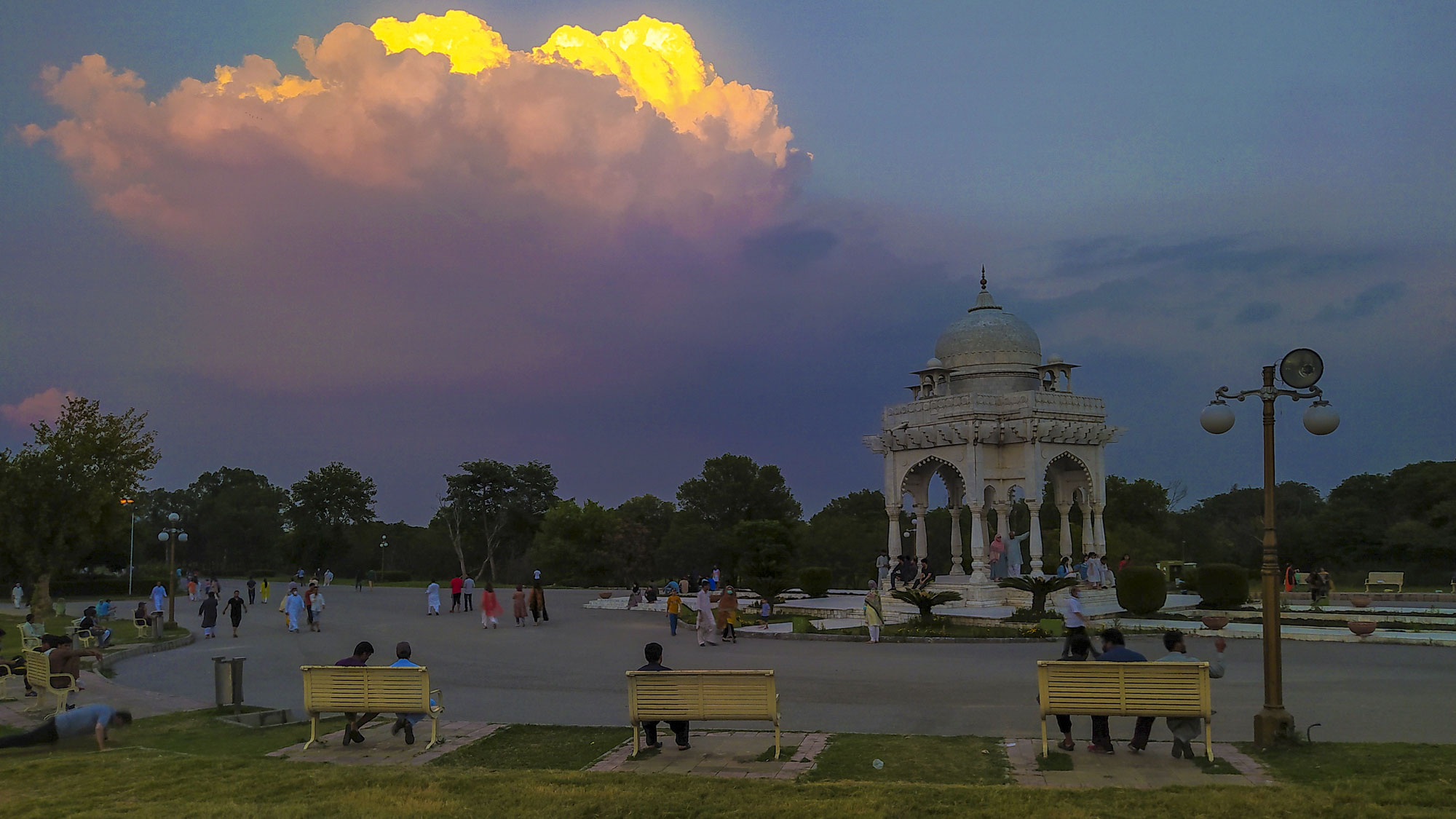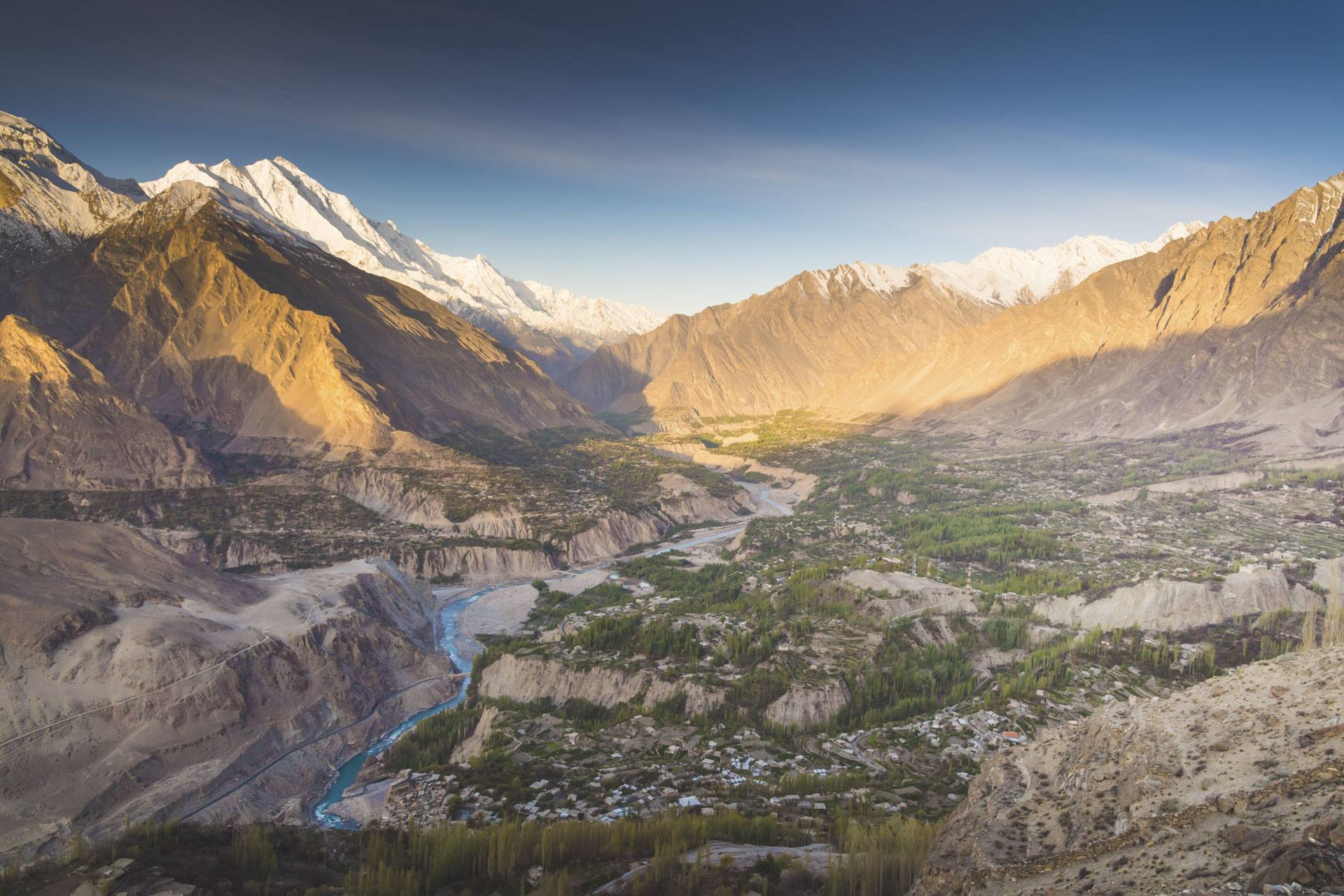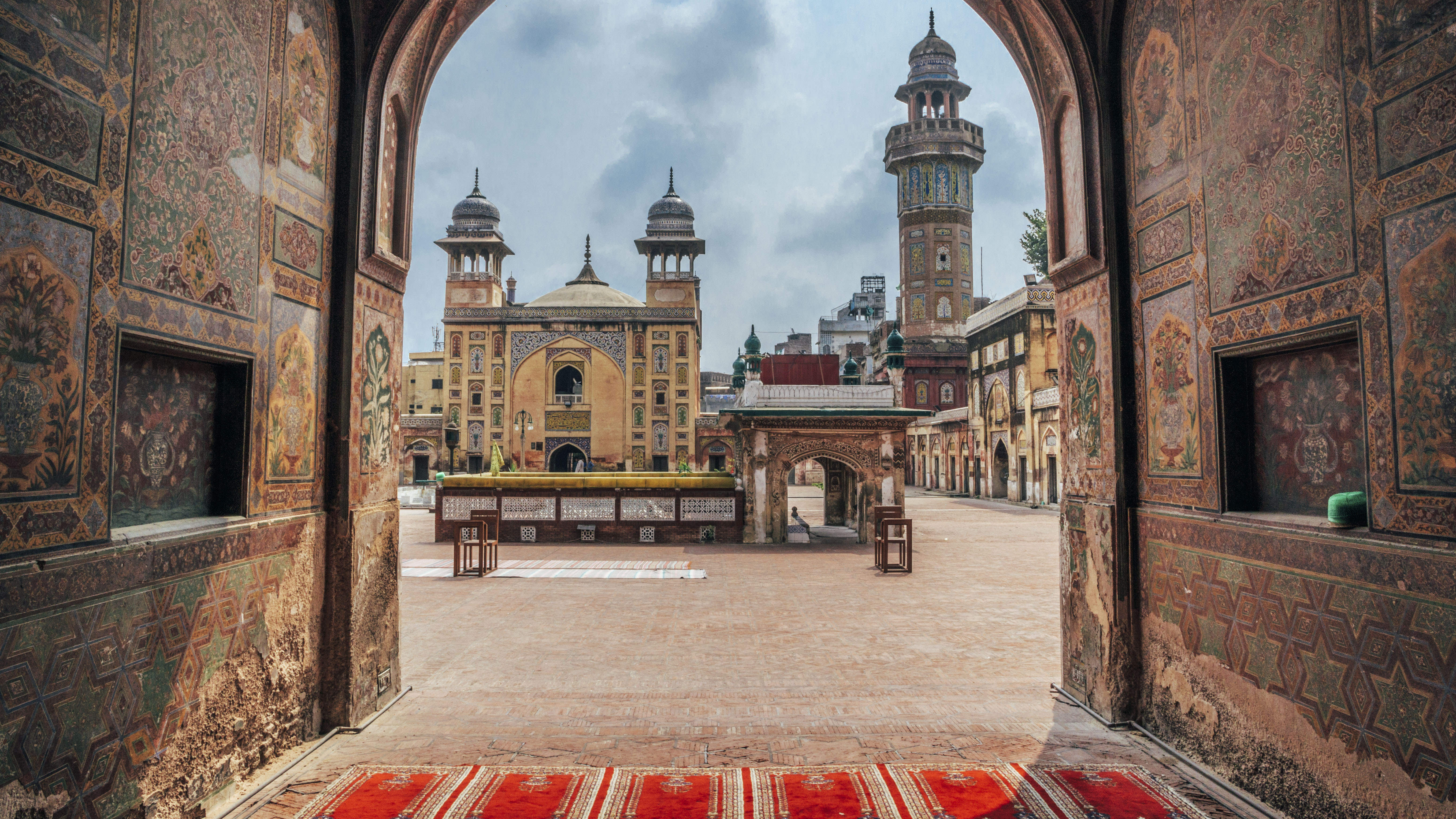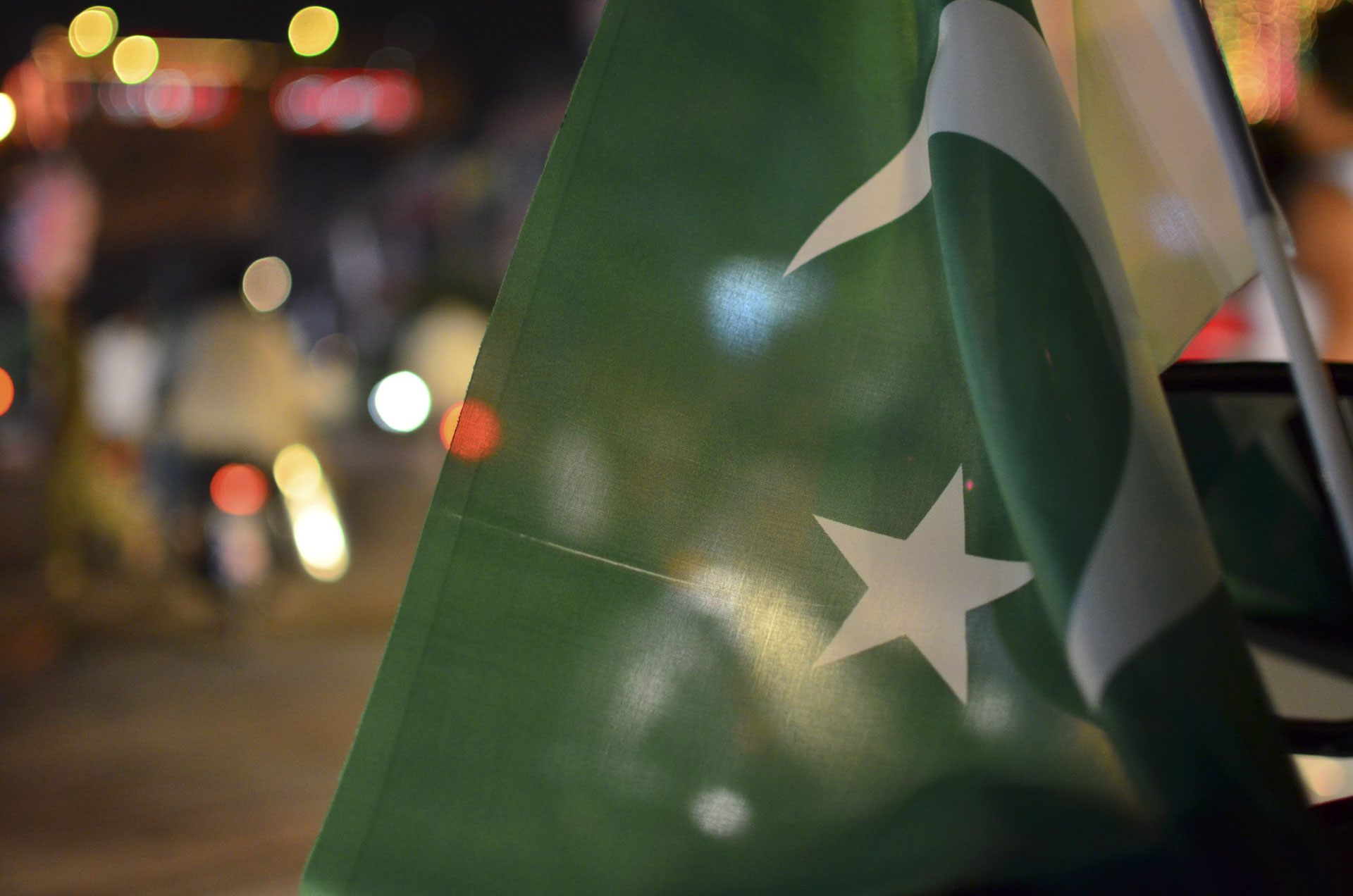I have been Cabin Crew at Virgin Atlantic for almost 20 years. Both my parents are Pakistani. My father came to the UK in the mid 60’s with the intention of earning some money before going back ‘home’. He married my mother and I am one of four siblings. He worked day and night working at the cotton factories. Lancashire was famous for producing cotton and the cotton industry was booming at the time. He told us stories of ‘hot bedding’. He lived in a house with working men. One would finish work and would literally kick the other person out of bed to go to work so he could climb into the vacant bed.
1.png)
We’ve been flying to Pakistan for a couple of years now, a popular route for business travel, for visiting friends and family and for adventurous tourists. To find out more, we caught up with Mohammed Nawaz, one of our Cabin Crew, who talks about his story and his travels to this fascinating country.


When I was about 11 years old my dad decided we should ‘reacquaint’ ourselves with our motherland. It was the winter of 1992 when we packed everything up and went on an adventure of a lifetime. Having never left the UK, we moved to Pakistan and lived there. We moved into the family home and lived with the extended family and our cousins. My older brother was 13, my younger brother aged 10 and my 5-year-old sister. It was our very first time on an aeroplane. My mum had bought us all new outfits to wear for our journey. I remember stepping foot onboard an aircraft for the first time. I remember our seats. I remember looking at the crew mesmerised by them. I knew then that I wanted to fly. I even remembered the stewardess’s name. She had the same name as my sister. The routing was Manchester to Islamabad. Little did I know then, 30 years later almost to the day, I would be preparing to operate that exact same route. Manchester to Islamabad but as operating Virgin Atlantic Cabin Crew. I remember so many little details of my first time on an aeroplane.

We lived there for a year. We were home schooled, but it was a hands-on education. We lived in a rural village a few hours south of Islamabad. To four British kids everything was an adventure. The colours, the smells, the food.. We simply loved it.
Even now when I smell food cooked on an open fire I am transported to my childhood. That wonderful aroma of delicious fresh baked nan bread and mouth-watering curries cooked on open wood fires. Playing with my cousins on the roof terrace with the most wonderful views. Being able to look into the courtyard of the houses from our rooftop. Families huddled together enjoying each other’s company. That wonderful smell has never left me. My siblings say the exact same thing.

I remember I used to love bed time. My cousins and I would lie in a row of beds in the courtyard with a fan on each side. We would laugh and play jokes. What I remember the most was lying in bed and opening my eyes to the a sky filled with the biggest, brightest, twinkling stars that would leave you mesmerised. In the summer we slept outside whilst the adults would sleep in the verandah. Every night I watched the stars fascinated by them. I never once got tired of seeing that night sky filled with stars.

Pakistan is truly a beautiful country and about 10 years ago I was fortunate to travel a bit around the north. I’ve backpacked all over the world and my latest adventure was 3 months in Brazil earlier this year. Like anywhere it’s important to be sensible but when it is safe to do so I for one cannot wait to get myself out there and really make the most of this route. The food, the people, the smells and the colours make Pakistan is a place unlike other and I for one cannot wait to explore extensively.

Our two Pakistan destinations - Islamabad and Lahore, are the ultimate tale of two cities, as we found out in this guide which appeared in a recent issue of our Retail Therapy magazine
Islamabad is the country’s capital and one of most beautiful cities in South Asia. A buzzing modern metropolis, along its lush tree-lined streets visitors will also find plenty of parks, museums, mosques and restaurants. Lahore, on the other hand, is the second largest city and has been the country’s cultural centre for centuries. It is famous for its architecture, historical monuments, splendid gardens, delicious food and friendly locals – known as the people whose hearts are alive. As the old Punjabi saying goes, “One who has not seen Lahore has not been born.”
When to go
The best time to visit both cities is from September/October through to March/April. If you like long, hot (42 degrees) days and you don’t mind the occasional heavy downpour (the wet season), the summer can be OK, but the last and first few months of the year are ideal.
Where to stay...
If you don’t want to risk an Airbnb, there are plenty of decent hotels to choose from.
For five-star glamour and style, Islamabad’s Serena Hotel (serenahotels.com) is a must-visit. With its Islamic architecture, a rooftop outdoor pool with views to the mountain beyond, and the outstanding Maisha Spa, you may find you don’t want to leave. Alternatively, the newly opened Legend Hotel (legendhotelspk.com) is a great alternative.
In Lahore, the Luxus Grand Hotel (luxusgrand.com) is an affordable premium hotel with a 24-hour front desk, a gym and a swimming pool. For a little more luxury, the modern Nishat Hotel Johar Town (jt.nishahotels.com) is in a great location, fully air-conditioned, and features a huge banquet hall.
Tick the tourist box...
Ask Google where to go and you will quickly find a list of must-visit attractions. You and every first-time arrival in the cities. In Islamabad you will be directed to the Faisal Majid mosque, the Pakistan Monument and the hilltop garden of Daman-e-Koh.
Likewise, Lahore’s world-famous red sandstone Badshahi Mosque, the Mughal-era Lahore Fort compound, the Sheesh Mahal “Palace of Mirrors” are all worth going to and all pretty spectacular. But to really discover both cities you need to look a little harder. For instance…
Where (and what) to eat...
No visit to Islamabad would be complete without dinner (or breakfast, or lunch) at the Monal Restaurant (monal.themonal.com). Surrounded by the Margalla Hills and with the city laid out before you, in truth the views are probably better than the food (which is a mix of local and Western-style cuisine), but the mutton green masala is the dish to order.
Lahoris love food and the place to go for a great meal and magnificent mosque views is the Fort Road Food Street. On the top floor of the Haveli Khalil Khan, the Haveli rooftop restaurant (haveli.com.pk) offers regional dishes and stunning sights. Order the speciality of mutton karahi and fresh puri.
Where to shop...
Ditch the malls, dust off your haggling skills and make for one of the authentically chaotic markets. The Rawalpindi Rajah Bazaar in Islamabad has everything you could ever want, even if you never realised you wanted it (except a set of false teeth – no one needs that). If you have an eye for a bargain and you want to mix with hard bartering locals, try the oldest shopping centre in the city, the Aabpara market.
Lahore’s Anarkali Bazaar is a sprawling old-school shopping street with its many narrow walkways. It does get busy from 6pm, but that all adds to the charm and chaos. For a slightly more refined retail experience, try the Liberty Market. This horse-shoe shaped collection of stalls is where you’ll find clothes, shoes, jewellery and bags.
How much? Well… that’s where the fun really starts.
For a cultural insight...
The Lok Virsa Heritage Museum (lokvirsa.org.pk) showcases much of Islamabad’s historical and cultural past through traditional art works, handicrafts and ethnographic exhibits.
The Lahore Museum (lahoremuseum.punjab.gov.pk), made from distinctive red brick and built during Britain’s colonial time, includes exhibits from the Indian subcontinent dating back to prehistoric times and will give visitors a rare insight into Pakistan’s past.
To escape the city...
Head for the ancient city of Taxila. Just 32km from Islamabad, it is an early settlement site close to the Silk Road dating back to 5BC with a fascinating collection Buddhist sculptures, mesolithic caves and archaeological remains. It’s a huge city to explore, so take some decent shoes.
The Shalimar Gardens in Lahore is a UNESCO World Heritage Site. It is a Persian-style 80-acre oasis created by the Mughal Emperor Shah Jahan in 1841 and feature over 400 fountains, various species of trees and a number of garden pavilions.
To escape the heat...
Smack bang in the centre of Islamabad is the city’s largest mall, the Centaurus (thecentaurusmall.com). Famous for its three skyscrapers and wave-like roofline, this five-storey development has 250 shops, covers 25,000sq ft, and has become a symbol of modern retail.
Lahore’s Emporium Mall (nishatemporium.com) is the largest indoor shopping complex in Pakistan. It features a hotel, over 40 food outlets, a nine-screen cinema and outlets galore. If you really can’t face another bit of bartering, you know where to come.
Don’t miss…
The Shakar Pariyan national park is the ultimate escape from Islamabad’s bustling streets. This urban wilderness is home to an arboretum, sculpted gardens and astonishing vistas, and even an amusement park (but don’t let that put you off).
In Lahore’s case, we recommend a trip to the Wagah border. The only open-land crossing point between Pakistan and neighbours India, every evening crowds have gathered (since 1959) to watch the two military forces perform an elaborate changing of the guard at the same time.
